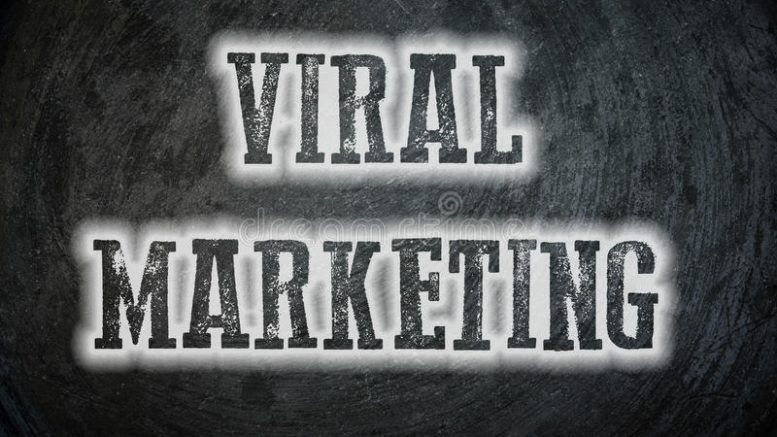In today’s fast and busy world companies are trying to make up new kinds of marketing tactics. One very useful and effective marketing strategy is viral marketing. It is a marketing technique which spreads a marketing message of a product from person to person.
One of the most successful viral marketing campaign in Germany is the commercial ”Supergeil” of the supermarket EDEKA. On February 20th in 2014 the agency „Jung von Matt“ released the three minute video under the Slogan “Super Markt. Super Marke. Supergeil” on the internet. The aim of the commercial was to attract a young target group for the brand EDEKA. After one week the video reached more than four million views on YouTube. Some people enjoyed watching the bizarre commercial “Supergeil” and started to share the video over their social media channels. In conclusion the marketing message was spread from person to person. Until today the commercial has more than 17 million views on the internet and it still grows.
Characteristics of viral marketing
But how can we identify a campaign to be viral? There are some characteristics which help to characterize a viral marketing campaign. The most typical characteristic is the exponential spread of a viral marketing message like a virus or snowball. That is possible, because generally a viral campaign is published on social media platforms as Facebook, YouTube or Twitter. A viral campaign can be cheaper in comparison to classic campaigns because there are no media cost for publishing content on the internet.
There are three types of viral marketing: Social interaction, unintentional viral marketing and commercial viral marketing. The first step is ”social interaction”: A clip or a picture goes viral but there is no campaign or company behind it. A current example is the clip with Robert Kelly in which his kids crash a BBC live interview.
In “unintentional viral marketing” a company is mentioned, but there is no campaign behind with the aim to promote a product. A famous example is “Spencer’s Home Depot marriage proposal” with more than 14 million views on YouTube.
In ”commercial viral marketing” a company creates a campaign with the aim to promote a product or a service. od example is a commercial of a shampoo made by the company called ”Old Spice”. This commercial reached over 54 million views on YouTube.
Viral marketing process
How does a viral marketing campaign go viral? At first the campaign reaches the market mavens who are the ones who know the market best. The relevance of the message is confirmed by salespeople. After that it gets to the social hubs. They know a lot of different people and when they start to share the message it reaches a lot of different people. The message is spread like a virus and it grows exponentially.
In viral marketing the consumers’ role is the most important. Without consumers who share the message, a campaign would never go viral. Consumers are talking with their friends about the campaign and their friends are going to tell it forward. They start to share posts via Facebook or Twitter, because usually they don’t even recognize a viral campaign as advertising. The consumers act as senders and recipients at the same time.
Active and passive viral marketing
A viral marketing campaign can be spread in an active or passive way. In the active marketing the consumer acts as a distributor. He spreads the message actively to persons in his evironment because he likes the content. Consequently the campaign reaches a huge audience. This is the most common form. In passive viral marketing, the consumer mainly spreads the message by using the product. He influences his enviroment by his consumption. A good example for that is the email service Hotmail. At the end of every email the company includes a quote ”send via Hotmail” and advantages of using this email service.
Factors of success
Both the active and the passive viral marketing ways are determined by factors of success which decide whether a campaign will turn into a hit or flop. Firstly the emotions play an important role. The campaign must speak to people and reach them in an emotional way. The second one is the right choice of distribution ways. A campaign should be spread over channels which reach the target group. The third point is the simplification of the marketing message. It should be short and easy to understand. Otherwise it will be too difficult to reach a huge audience. Next point is the chance of using current events to spread the campaign’s message to the right target group which will recognize the product. The definition of the target group should not be disregarded for launching a campaign. The companies should think hard about who they want to reach, where and at which time. Nowadays the digital era involves many channels which address different target groups.
Effects on marketing in general
Viral marketing has an enourmous influence on classic marketing in general. A lot of companies try to develop sophisticated marketing strategies and excellent campaigns to go viral. Each company tries to be better than the other. This competition leads to an overload of weird, bizarre and funny marketing campaigns. In conclusion it is very hard for a company to launch a viral hit. Besides the classic advertisment appears to be boring in comparison to the very creative and original viral marketing campaigns. This has the effect that consumers get a bit tired of those campaigns. In total this phenomenon has the effect that the marketing in general is changing. It causes a lot of diversification in the companies.
by Laura Bohnet, Lisa Warth, Fabian Öhrle, Jarkko Harjumaa, Anna Wittich
Image source: www.dreamstime.com

